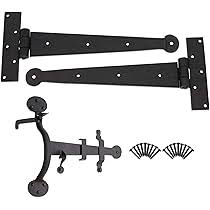The Evolution and Importance of Fighter Aircraft
Introduction to Fighter Aircraft
Fighter aircraft have been a central component of military air forces since their inception in the early 20th century. They are designed primarily to engage other aircraft in combat, play pivotal roles in air superiority and support ground forces. Today, advancements in technology and evolving military strategies are redefining the capabilities and significance of these aircraft in modern warfare.
Current Developments in Fighter Aircraft
In recent years, several countries have made headlines with advancements in fighter aircraft technology. The United States continues to lead with its F-35 Lightning II, a fifth-generation multirole stealth fighter. Integrating advanced avionics, sensor fusion, and stealth capabilities, the F-35 is designed to operate in highly contested environments.
Meanwhile, China’s Chengdu J-20 has emerged as a formidable competitor. As one of the first fifth-generation stealth fighters to be deployed by China, the J-20 emphasises speed, range, and advanced attack capabilities. Its development highlights China’s ambitions to challenge Western air dominance.
The Eurofighter Typhoon, a joint project involving several European nations, has also seen modernisation efforts that enhance its capabilities, ensuring it remains competitive globally. Countries like India and Russia are additionally progressing with their own advanced aircraft, such as the Su-57 and the HAL Tejas, to bolster their air power and achieve greater autonomy in defence.
Strategic Importance
Fighter aircraft remain crucial in contemporary warfare due to their versatility and speed. As tensions rise in various geopolitical landscapes, nations are increasingly investing in upgrading and acquiring new fighter technology. The adaptability of these aircraft makes them essential not only for air-to-air combat but also for ground support, intelligence, reconnaissance, and deterrence.
Future Outlook
Looking ahead, the future of fighter aircraft promises to be shaped by the growing integration of artificial intelligence (AI) and drone technology. Unmanned combat aerial vehicles (UCAVs) are expected to complement manned fighter jets, providing advanced capabilities for surveillance and combat missions without risking pilot lives.
Furthermore, international collaborations on joint fighter projects, such as the UK-led Tempest programme and the Future Combat Air System (FCAS) by France and Germany, signal a trend toward cooperative defence initiatives aimed at enhancing operational effectiveness against common threats.
Conclusion
The evolution of fighter aircraft reflects the broader changes in military strategy and technology. As nations adapt to new aerial warfare paradigms, the significance of these aircraft will continue to grow, making them a focal point in future military capabilities and international defence efforts. For citizens and policymakers alike, understanding these dynamics is essential as they influence global security and power balances.









